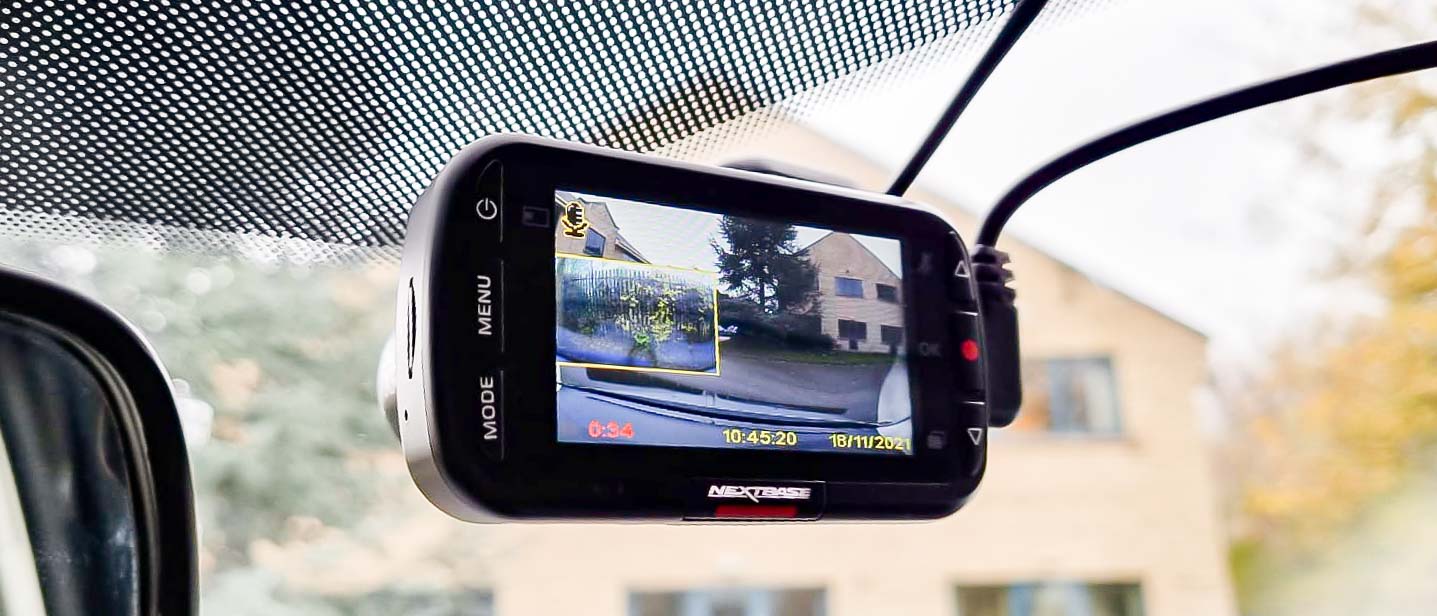Tom's Guide Verdict
Experienced dash cammers might mourn the lack of advanced features or 2K recording, but the Nextbase 320XR makes for a great, no-frills dual camera solution that undercuts many rivals in its class.
Pros
- +
Decent all-in-one dash cam solution
- +
Very affordable package
- +
Sleek, compact design
Cons
- -
Slightly fuzzy footage
- -
Lacks advanced features
Why you can trust Tom's Guide
Field of view: 140° front and rear
Resolution: 1080p front and rear
GPS: No
Display: 2.5-inch screen
Nextbase 320XR dash cam takes aim at the dual dash cam market and fires off an impressive salvo that comprises 1080p front and rear cameras. The tradeoff is that you won’t find all the bells and whistles you might normally find in Nextbase’s mid-range cameras.
Nextbase 320XR dash cam review: Price and availability
The Nextbase is available for the bargain price of $149.99, which undercuts many rivals in its class offering similar packages. It’s an absolute steal for a branded dual camera system.
Nextbase 320XR dash cam review: Design and features
The 320XR’s front unit takes Nextbase’s familiar compact camera design but is slightly smaller than the 522 and 622, its chunkier brothers. This particular model features a sleek, all-black aesthetic that blends in nicely on your windshield.
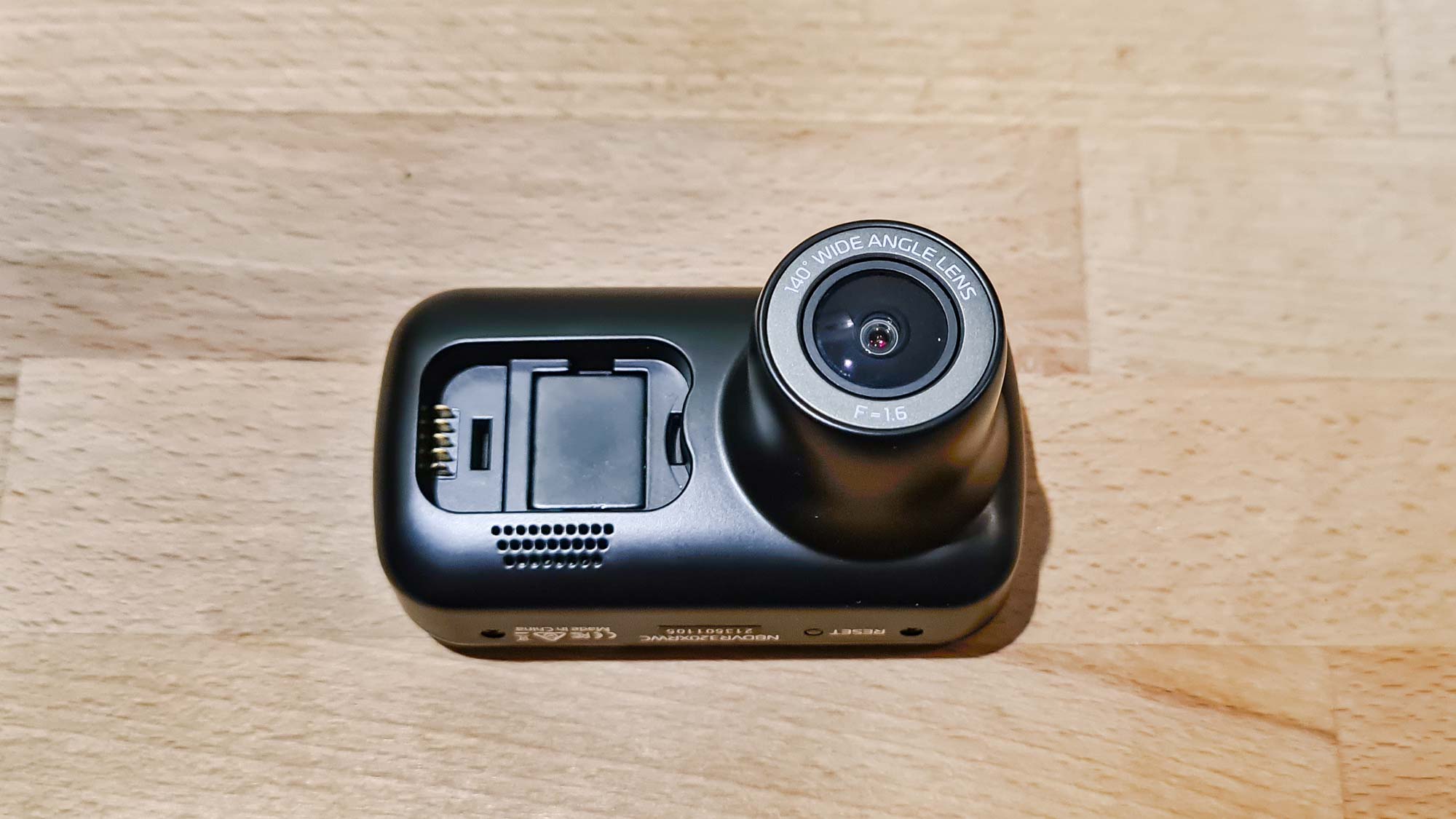
Like its predecessors, the 320 features a thick lens housing that features a 140-degree wide-angle lens. At the rear, an array of function buttons, all logically laid out and feeling each one feeling reassuringly solid upon pressing.
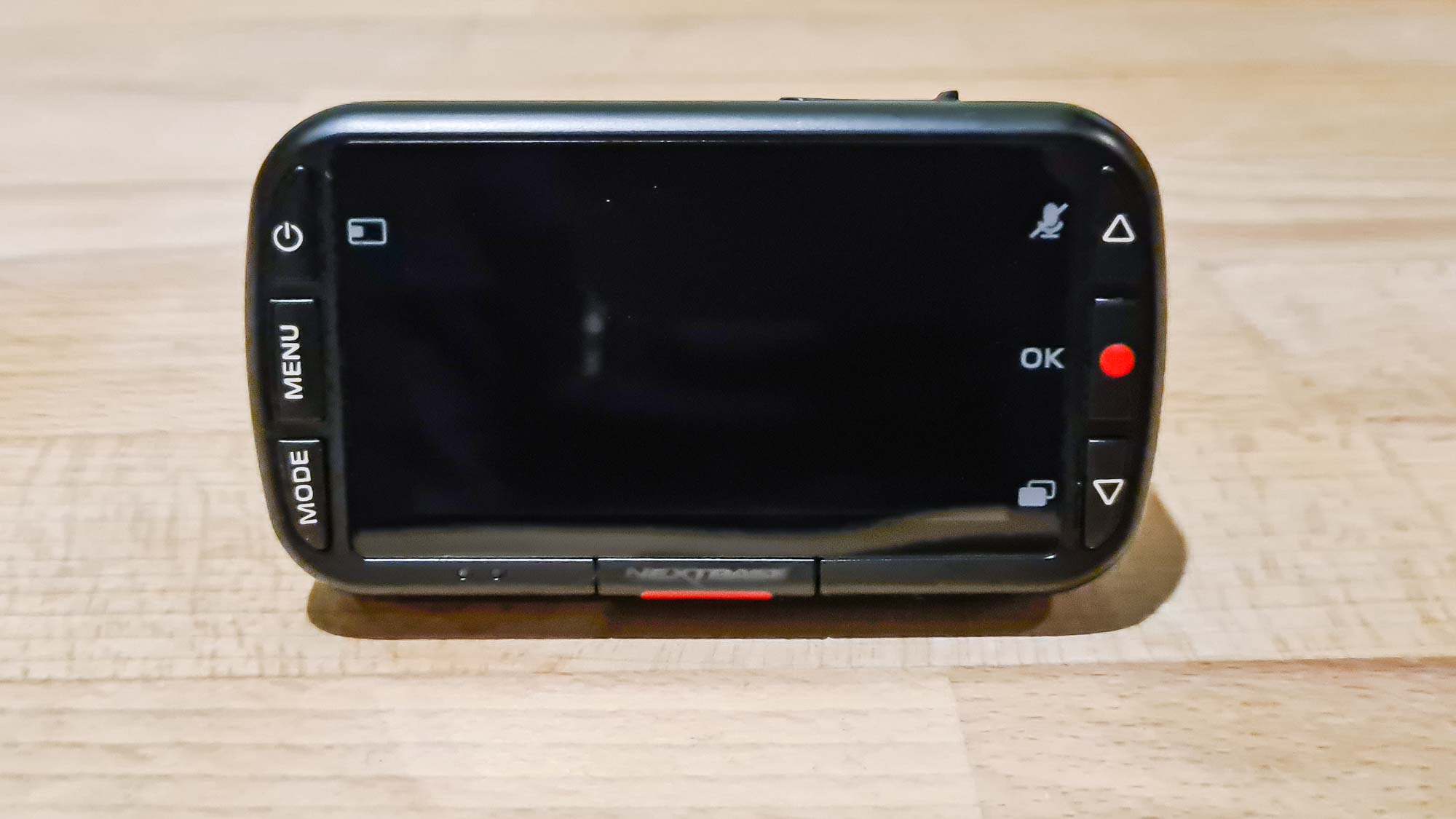
In terms of features, the 320 represents a slight devolution from the 322, its older, more established variant — gone are the emergency SOS, Wi-Fi, and GPS systems. What the 320XR does have is 1080p recording (as does its rear camera) and a G-sensor that automatically protects footage from being overwritten when it senses a collision.
There’s also an intelligent parking mode. This means that when the engine is turned off, the unit powers down and hibernates for up to a week using its internal battery — while the sensitivity of its G-sensor is cranked right up. Should it detect an incident, the unit kicks into life and starts recording again. It’s a clever system that works even when I gave my vehicle a light shove, largely negating the need for the camera to be hardwired into the car’s own power supply.
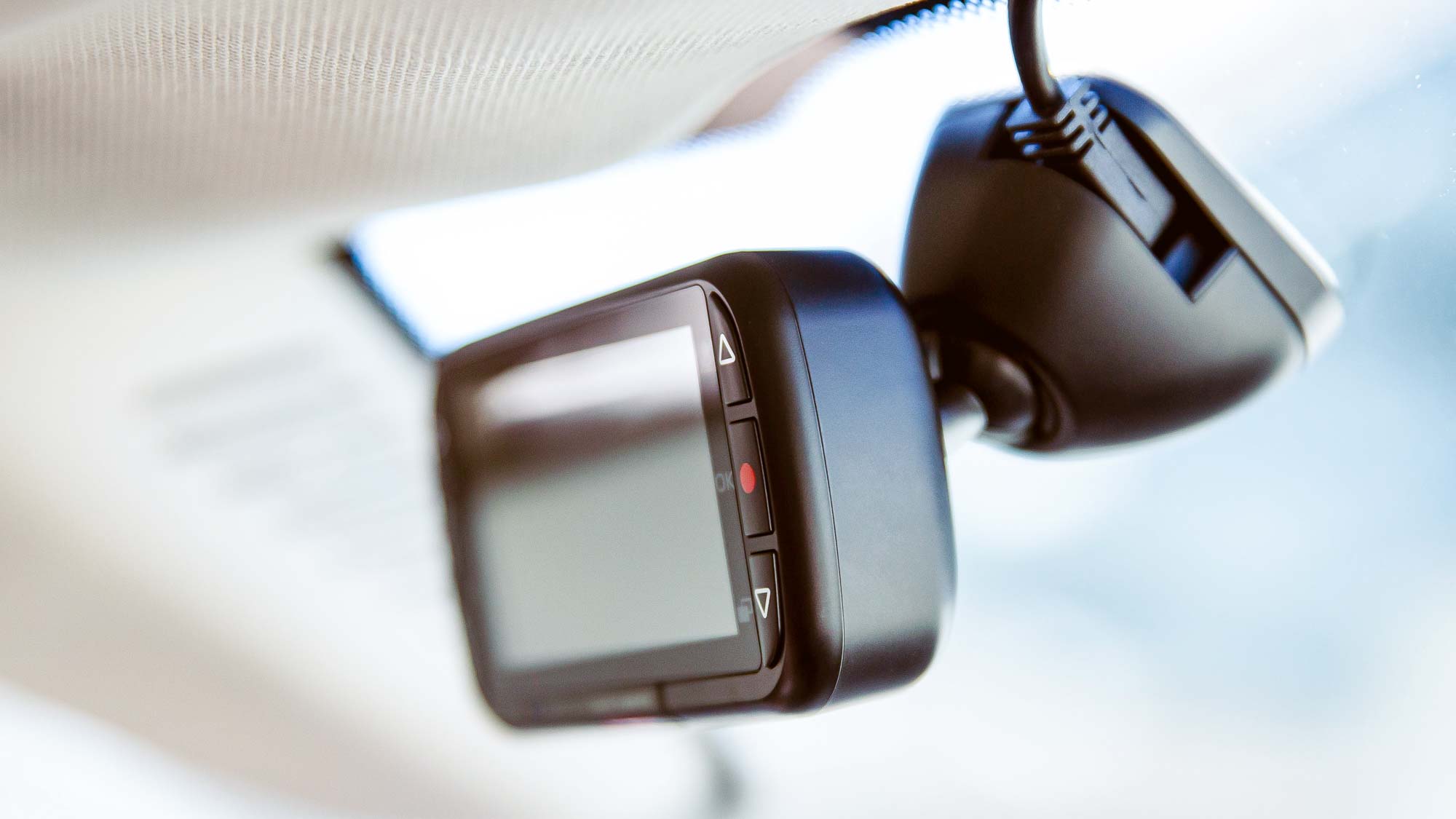
However, that’s all you get features-wise — no touchscreen, voice control, or advanced connectivity options.
Nextbase 320XR dash cam review: Setup
Unburdened by advanced settings and functions, the Nextbase 320XR is a cinch to set up. You’ll be using adhesive mounts to place the front and rear cameras, the former of which uses Nextbase’s Click&Go Pro mount.
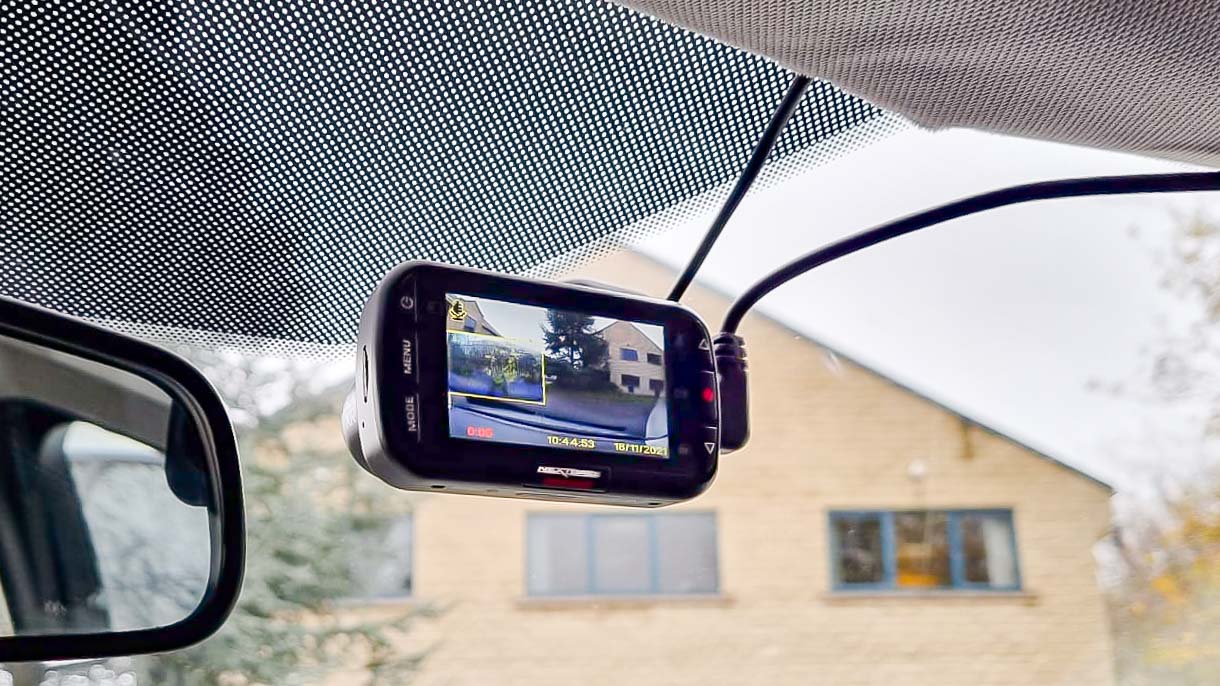
While this provides a solid magnetic hold for the unit, users can remove the camera with just one hand and no fuss. When attaching, the unit snaps satisfyingly into place on the mount. Plus, thanks to the 320XR’s internal battery, you can also set up the device’s settings without needing to connect to a power supply.
You get a cable to connect the 320’s rear camera, which should be long enough for most. It’s attached via another magnetic mount, with the rear camera body being magnetized enough that you can freely adjust the lens angle with a twist or pull. However, this does make it easy to nudge the camera out of position.
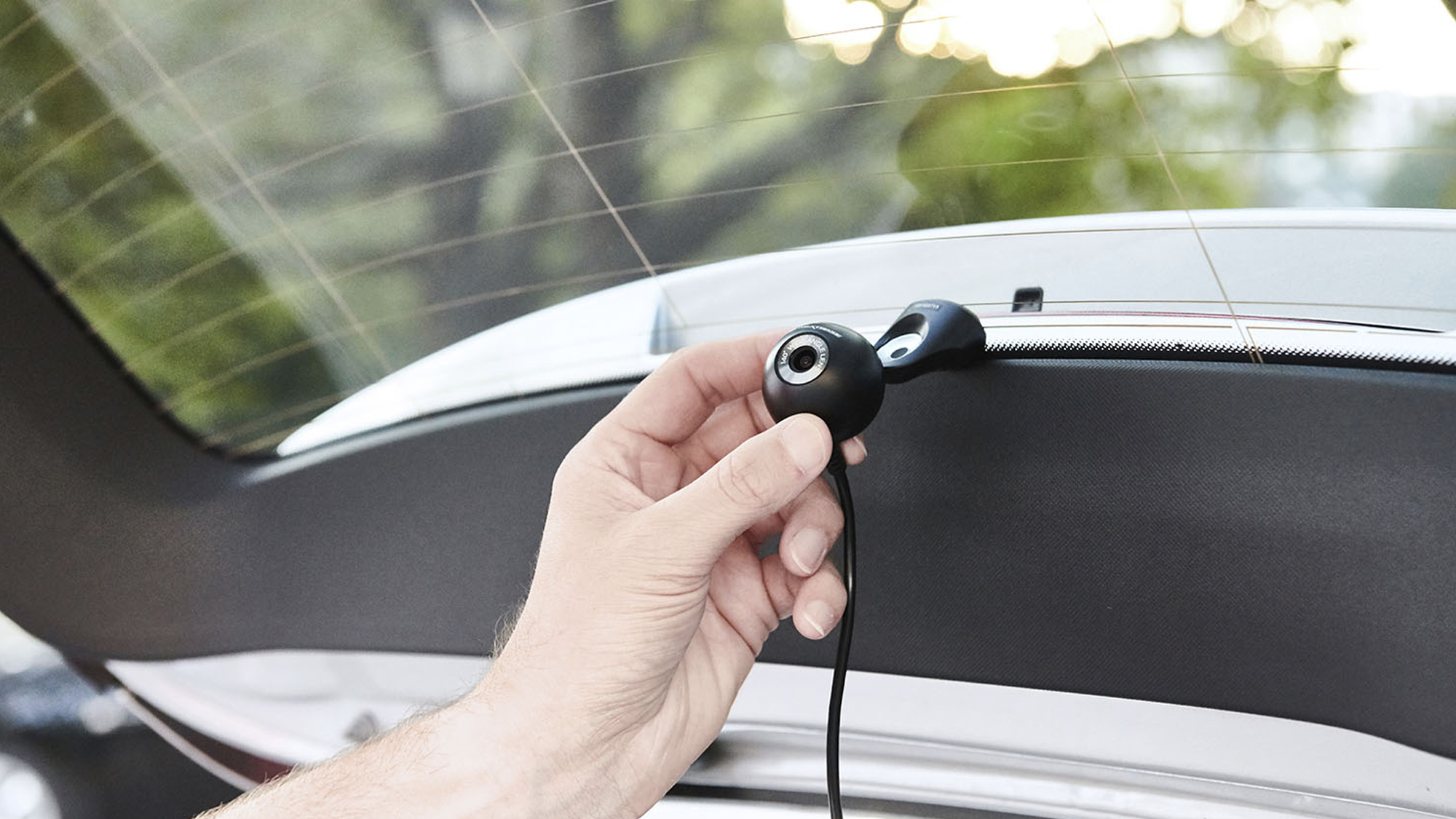
It’s worth mentioning not to skimp on the memory card, either. As it’s a dual camera system, Nextbase recommends using nothing short of a class 3 microSD card for optimal performance.
Nextbase 320XR dash cam review: Video and audio quality
The Nextbase 320 XR offers good video quality, but sadly, it’s not without some very minor issues. Colors come out accurate, if a touch saturated, while it generally handles high contrast scenarios, such as bright sunlight, pretty well.
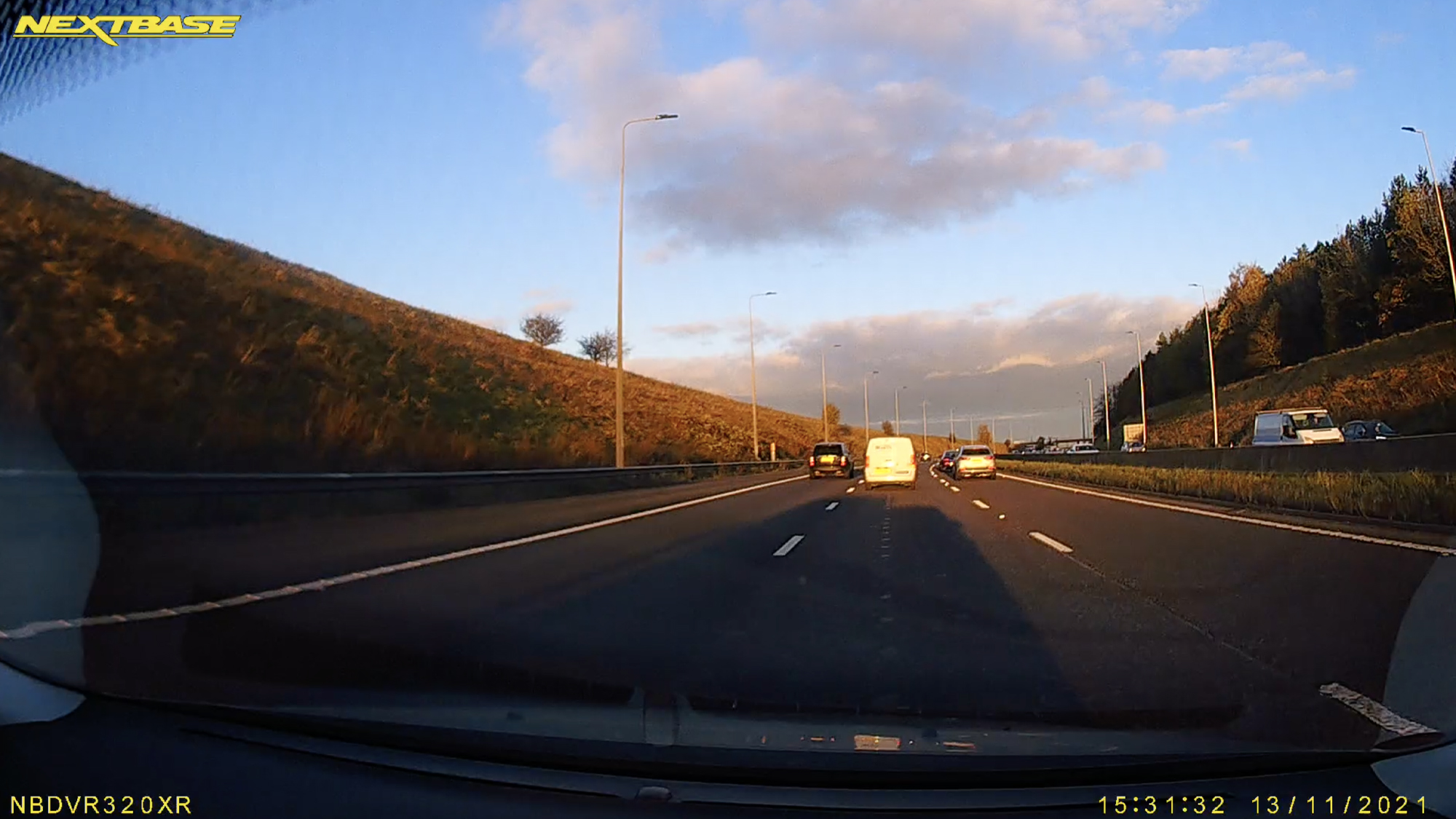
Nevertheless, it’s slightly off putting that the front cam’s shots tend to be a shade darker compared to the rear camera, especially in grayer conditions.
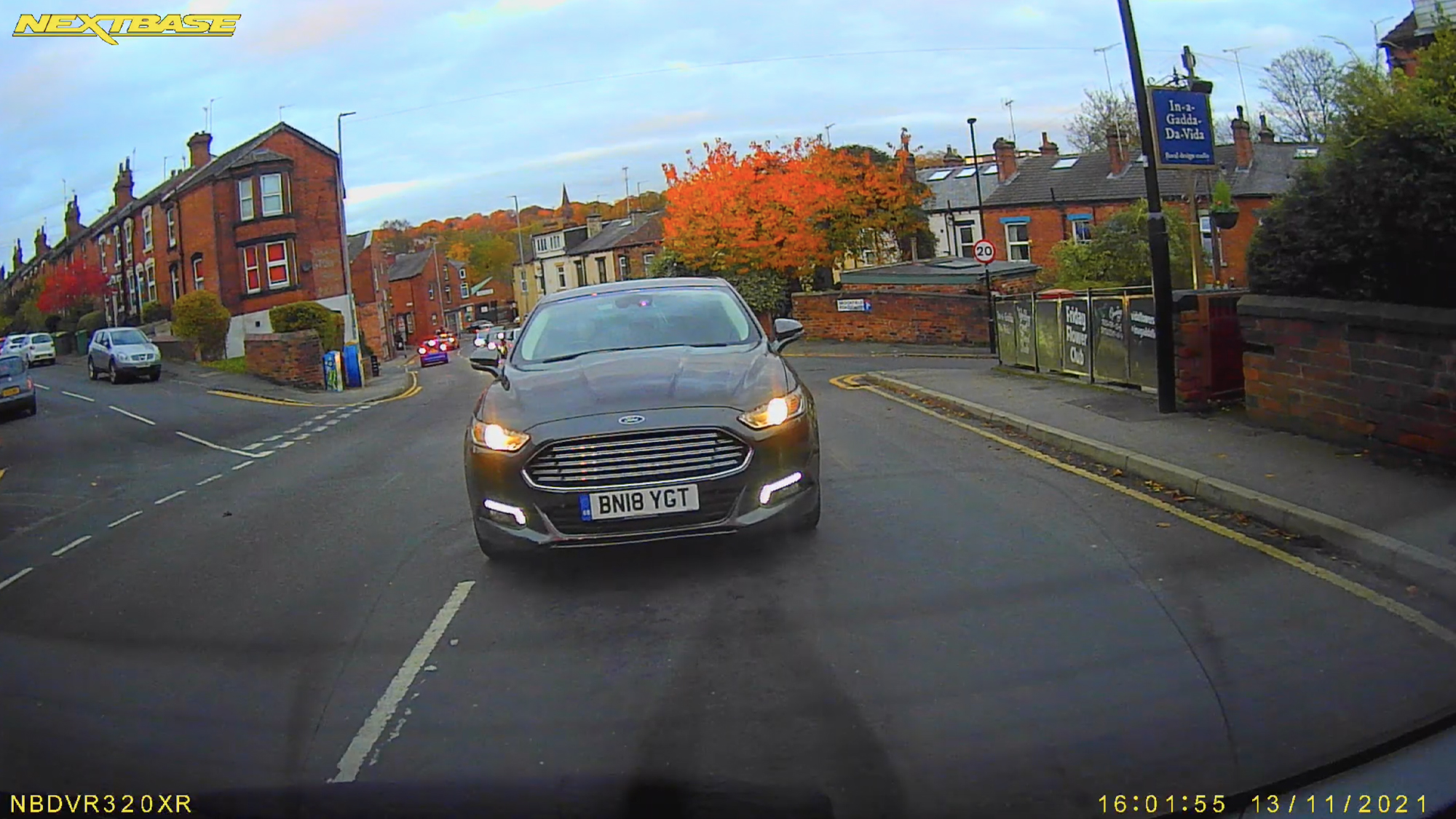
And if we’re being really picky, there’s a noticeable fuzziness in the image at playback that’s often indicative of 1080p recording. Even compared to other full HD dash cam footage, it’s an iota less sharp than other leaders in its class.
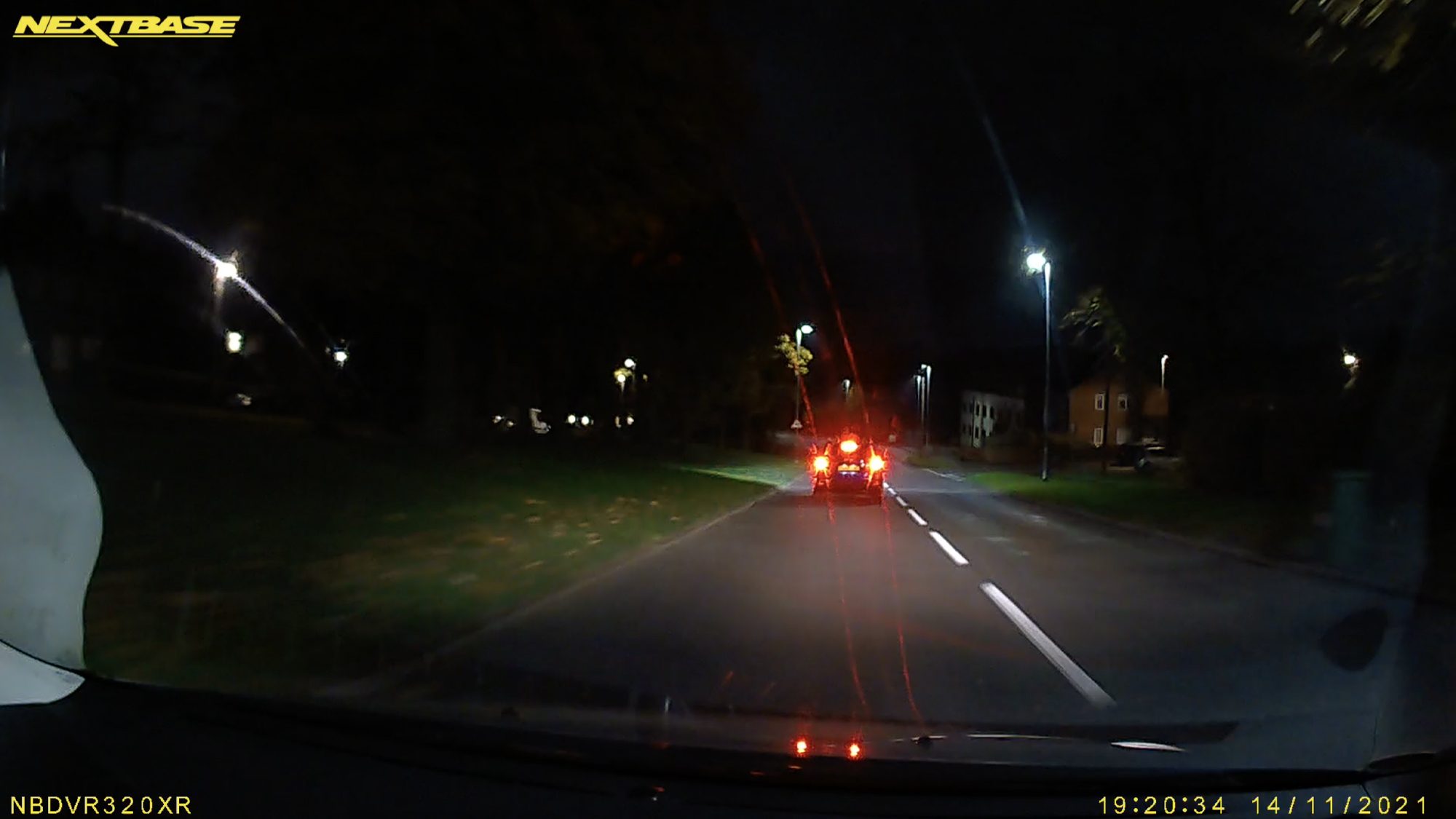
I wish Nextbase had chosen to offset that by offering a 60fps frame rate, rather than 30, as it makes reviewing footage to get clarity on details, such as vehicle tags, that little bit trickier. However, while the 320XR doesn’t offer pin-sharp detail, it’ll hold up just fine for what most people need.
The rear camera captures quite a bit of the road and offers excellent detail with its wide angle, especially if you’re sick of the limits of 720p rear cameras. The only thing lacking is that if there’s minimal light, once again, things get fairly grainy.
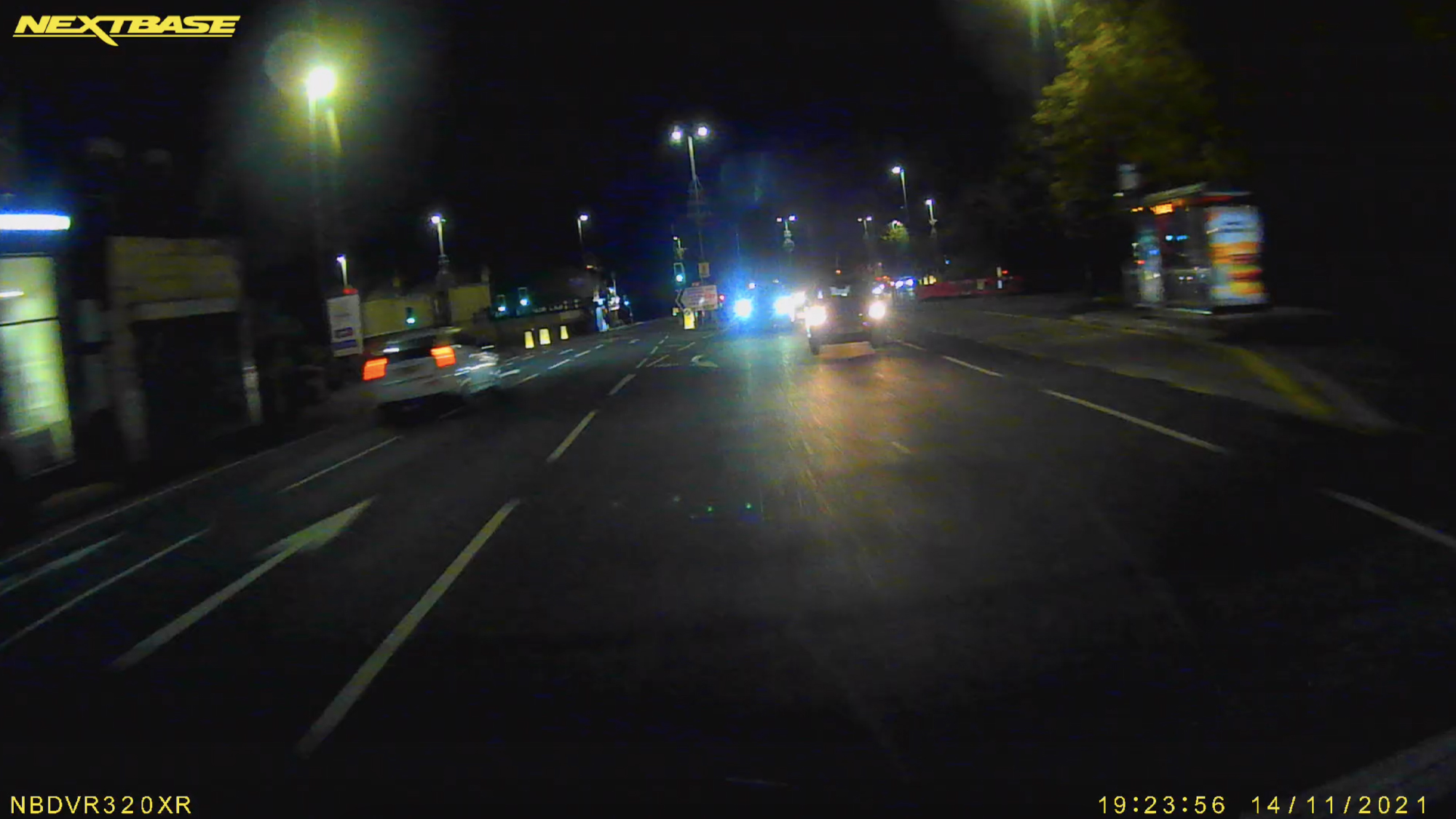
Thankfully, audio isn’t an issue, with the microphone capturing voices fairly convincingly, even in heavy road noise.
Nextbase 320XR dash cam review: Verdict
Experienced dash cammers might mourn the lack of advanced features or 2K recording, but the Nextbase 320XR makes for a great, no-frills dual camera solution that undercuts many rivals in its class.
Image quality, while not perfect, is more than capable, and its compact, subtle design makes it adaptable for most vehicle needs. If you’re after a reliable, affordable double camera system without the ostentatious box of tricks, and this one solidly fits the bill.

Matt is a technology journalist with over 15 years experience and has written for publications including Stuff, Eurogamer and Popular Mechanics.
When not writing or reviewing the latest gadgets, Matt can be found stuck into the MCU film series or any of the latest video games.
